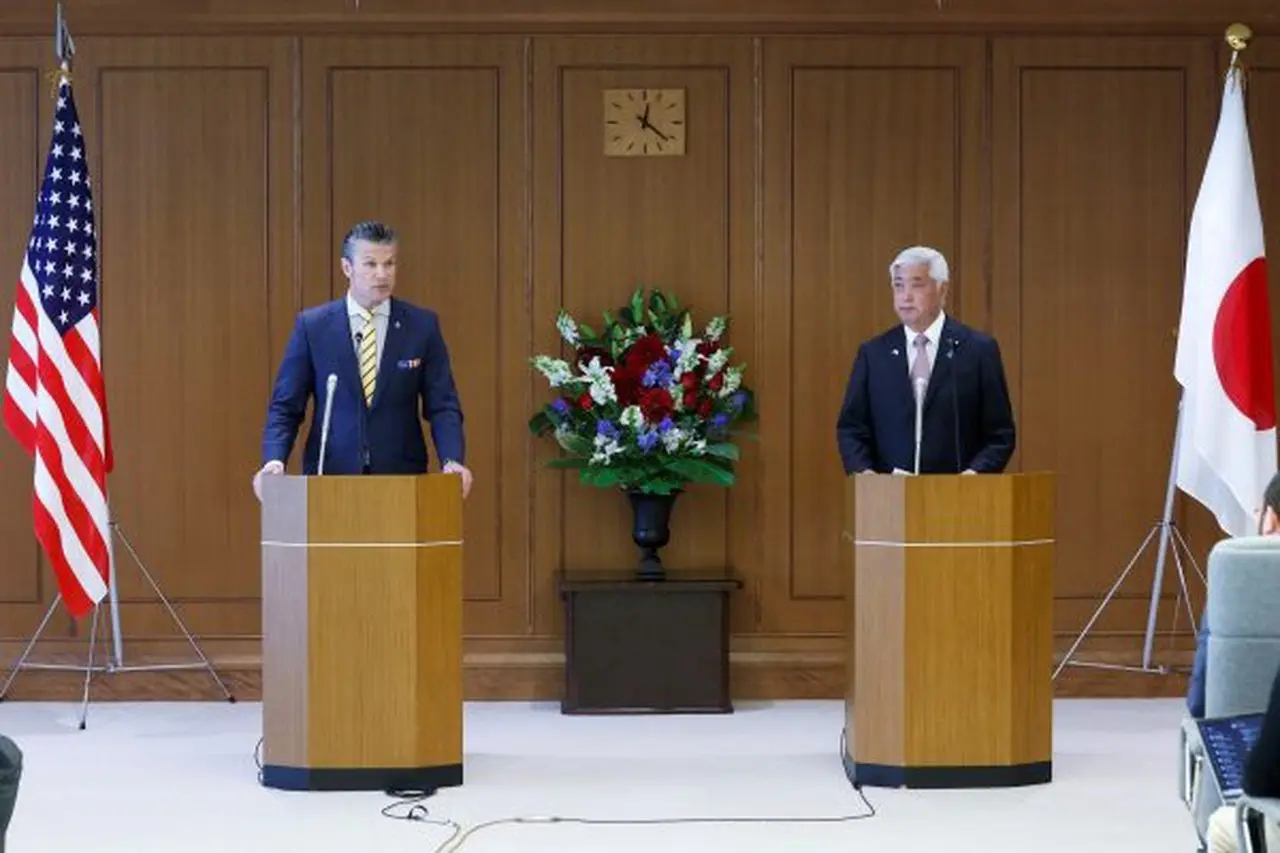Meeting with his counterpart in Tokyo on March 30 (Sunday), U.S. Secretary of Defense Pete Hegseth described America’s alliance with Japan as key to maintaining peace and security in the Asian region, particularly in the face of Chinese belligerence.
“We share a warrior ethos that defines our forces,” Hegseth told Japanese Defence Minister Gen Nakatani at a meeting in Tokyo. “Japan is our indispensable partner in deterring communist Chinese military aggression,” including across the Taiwan Strait, he said.
Emphasizing that the Trump administration would continue to work closely with Japan, Hegseth said that a Biden-era plan to upgrade the U.S military command in the country would get under way.
The plan, unveiled in July 2024, aims to deepen coordination with Tokyo’s forces. At that time, the U.S. and Japan indentified the People’s Republic of China (PRC) as their “greatest strategic challenge.”

Japan’s Senkaku Islands are the subject of a territorial dispute with China, while Taiwan, the de facto island country that Beijing claims is rightfully a part of the PRC, controls a sea lane that is crucial for Japan’s foreign trade.
For the best of our weekly content!
You are now signed up for our newsletter
Check your email to complete sign up
Hegseth also asked the Japanese to allow the U.S. military greater access to its southwestern islands and waters, including Kyushu and the Ryukyu islands near Taiwan.
‘America first does not mean America alone’
Per the upgrade to American forces in Japan, a U.S combined operational commander would be assigned to the country. This officer would be a counterpart to the head of a joint operation command established by the Japaness Self-Defense Forces last week.
“President Trump has said America will re-establish peace through strength. President Trump has also made it very clear, and we reiterate, we are going to put America first,” Hegseth said during his Japan visit.
“But America first does not mean America alone. America’s warriors stand shoulder to shoulder everyday with their Japan Self-Defense Force counterparts.”
Japan hosts 50,000 U.S. military personnel, squadrons of fighter jets and Washington’s only forward-deployed aircraft carrier strike group along a 3,000-km (1,900-mile) East Asian archipelago that hems in Beijing’s military power.
The Japanese have recently doubled their military spending, including money to purchase longer-range missiles, as the U.S. under President Donald Trump urges its allies to increase their share of defense expenditures.
Speaking with Hegseth, Japanese defense minister Gen Nakatani agreed to accelerate a plan to jointly produce beyond-visual-range air-to-air AMRAAM missiles and to consider collaborating on production of SM-6 surface-to-air defence missiles to help ease a shortage of munitions.

Hegseth had arrived in Japan after finishing a visit to the Phillipines. There, meeting with the country’s president and defense secretary, he also spoke of that country’s importance to American goals of maintaining peace in the region, mentioning Manila’s concerns about PRC enroachment on its sovereign waters in the South China Sea.
“Deterrence is necessary around the world, but specifically in this region, your country, considering the threats from the communist Chinese,” Hegseth said during his March 28 meeting with Philippine President Ferdinand Marcos Jr.

Meeting with the Philippine leaders, Hegseth reaffirmed the United States’ “ironclad commitment” to the Mutual Defense Treaty between the two countries, and added that President Trump “speaks very fondly” of the Philippines and its relationship with the U.S.
Hegseth’s Asia tour comes as the United States, Japan, and the Philippines launch their latest round of joint maritime exercises, aimed at strengthening regional security cooperation.
The drills, the eighth among the three allies, involve Japan’s multi-mission frigate JS Noshiro, the Philippine Navy’s BRP Jose Rizal, and the U.S. Navy’s guided-missile destroyer USS Shoup.
In recent months, clashes between Chinese and Philippine vessels in disputed waters have sometimes resulted in violence, while the Chinese Communist Party (CCP) has sent flights of bombers and other aircraft to intimidate Phillipine positions in the area.

Per its constitution, established after Japan’s defeat by the U.S. in World War II, Tokyo has renounced the right to conduct offensive military operations — though equipped with a powerful navy and air force, the Japanese military is officially a “self-defense force.”
However, as Communist China builds up its own armed forces, Japan has given more weight to not only its own national defense, but also cooperating with other countries to deter Beijing.
Last July, Tokyo signed a defense treaty with the Phillipines that allows both countries to station troops on each other’s territory. The Reciprocal Access Agreement (RAA) is the first of its kind that Japan has signed with another Asian country.



Leave a Comment